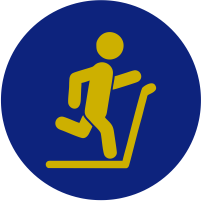Scoliosis
What Is Scoliosis?
Scoliosis is an abnormal curvature of the spine. The normal shape of a person’s spine includes a curve at the top of the shoulder and a curve at the lower back. If your spine is curved from side to side or in an “S” or “C” shape, you might have scoliosis.
According to the American Association of Neurological Surgeons (AANS), about 80 percent of scoliosis cases have no identifiable cause. The condition is often diagnosed during the first seven years of a child’s life.
What Causes Scoliosis?
The cause of scoliosis often can’t be determined. Common causes that doctors may identify include:
- cerebral palsy, a group of nervous system disorders that affect movement, learning, hearing, seeing, and thinking
- muscular dystrophy, a group of genetic disorders that result in muscle weakness
- birth defects that affect an infant’s spinal bones, such as spina bifida
- spinal injuries or infections
People with a family history of scoliosis are more likely to develop the condition. Girls are more likely to have a more severe form of scoliosis than boys.
What Are The Symptoms of Scoliosis?
Symptoms vary depending on the degree of scoliosis. Common symptoms associated with scoliosis include:
- one shoulder blade that is higher than the other
- one shoulder blade that sticks out more than the other
- uneven hips
- a rotating spine
- problems breathing because of reduced area in the chest for lungs to expand
- back pain
What Are The Treatment Options For Scoliosis?
Treatment depends on numerous factors, the degree of spine curvature being a major one. Your doctor will also take into consideration:
- your age
- whether you are likely to continue growing
- the amount and type of curvature
- the type of the scoliosis
The primary treatment options are bracing and surgery.
Bracing
According to the National Institute of Arthritis and Musculoskeletal and Skin Diseases, a person with scoliosis may need to use a brace if:
- They’re still growing and the curvature is more than 25 to 30 degrees.
- They’re still growing and the curvature is between 20 and 29 degrees, but the curvature is getting worse.
- The curvature is between 20 and 29 degrees and the person has at least two more years to grow (also applies to girls who haven’t begun menstruation).
Braces won’t straighten the spine, but they can prevent the curvature from increasing. This method of treatment is more effective for cases that are detected early.
Those requiring a brace need to wear it 24 hours a day for maximum effectiveness. As an exception, children may remove their braces to participate in exercise and sports activities.
Doctors usually recommend that children wear their braces until they reach adolescence and are no longer growing.
There are two main types of braces:
- Underarm: Made of plastic and fitting close to the body, this brace is virtually invisible. It’s used to treat lower spine curves and fits around the lower part of the body.
- Milwaukee: This brace starts at the neck and covers the entire torso, with the exception of the legs and arms. It’s used for curves that the underarm brace can’t address.
Surgery
Surgery is usually reserved for people with curves greater than 45 or 50 degrees. However, talk to your doctor about this option if you’ve been diagnosed with scoliosis and feel the curvature is interrupting your daily life or causing you discomfort.
Spinal fusion is the standard scoliosis surgery. In this procedure, the doctor fuses your vertebrae together using a bone graft, rods, and screws. The bone graft consists of bone or a material like it. The rods keep your spine in a straight position, and the screws hold them in place. Eventually, the bone graft and vertebrae fuse into a single bone. Rods can be adjusted in children as they grow.
Our team is here for you
We offer the best, least invasive and least aggressive options to relieve your pain and symptoms so you can get back to the life you love. Atlantic Orthopaedic Specialists Spine and Scoliosis Care Center has convenient locations in Virginia Beach, Norfolk and Chesapeake.



